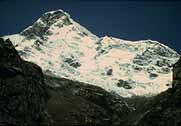 |
Alpine Environments |
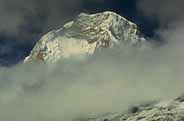 |
 |
Alpine Environments |
 |

| The Andean Cordillera extends the length of western South America, largely unbroken, for over 7500 kms. It is the dominant physiographic feature of the continent. Its peaks average 3500-4500 m from Colombia to Argentina and form a formidable east-west barrier for plants, animals and man. In Peru, the Andes consist of two parallel ranges, the Cordillera Occidental and Cordillera Oriental. The combination of high elevations and latitudinal range give rise to several types of specialized alpine environments. In northern Peru, between the páramos to the north (Colombia, Ecuador, Venezuela) and puna to the south (southern Peru, northeastern Chile, Bolivia, northwestern Argentina), there exist transitional alpine formations known as jalca. While exacting definitions are lacking, jalca is usually interpreted as drier than páramo and wetter than puna (Weberbaruer, 1945). This climatic transition encompasses a region referred to as the Huancabamba Deflection (or Depression), one of the few pronounced discontinuities in the Andean Cordillera where the mountains bend from NW to NE and become fragmented. Habitat heterogeneity and fragmentation in this region appears to have affected speciation, endemism, and overall biodiversity in both plants and animals. This region can be thought of as a more diverse and complex northern extension of the "altiplano." |
| Flora of the Jalca Formations of Northern Peru Jalca formations of northern Peru have supported pastoral residents for over 3000 years and their important position in the hydrological cycle is evident today. A multitude of river basins (cuencas) have their origins in the jalca formations and rivers flow both to the eastern (Atlantic) and western (Pacific) versants. This water supply is vital for human consumption and irrigation at lower elevations. With the recent expansion of human activities, agriculture and mining in particular, these habitats are being modified and destroyed. The soils of the jalca are fertile but highly susceptible to erosion and rivers are often polluted by mine tailings. |
| To more fully document the biodiversity of the jalca formations and monitor the changes that are impacting this region, we are working to complete a comprehensive, specimen-based, floristic inventory for the jalca formations of northern Peru. This project combines focused field collecting in specific formations with the information from existing botanical vouchers to produce a comprehensive checklist of the vascular flora of these habitats. In addition to the raw diversity data, the resulting database will allows for biogeographic analysis of distributional patterns, both for individual taxonomic groups and vegetational communities. |
| Existing information, studies, and resources of the area A few jalca formations are relatively well-known since major roads pass through or near them, for example, Jalca de Kumulca and Jalca de Calla Calla which are on opposite sides of the Marañón valley. However, the majority are quite inaccessible and have not been fully explored or collected. As an example, when we visited a jalca locality above the village of Incahuasi for a total of three days, our collections resulted in the publication of five new species: Chrysactinium breviscapum Dillon & Sagást., Diplostephium yahuacochense Cuatrec., Gynoxys dilloniana Sagást. & Téllez, Ranunculus lambayequensis Duncan & Sagást., Symplocos incahuasiensis Sagást. & Dillon, and (Cuatrecasas 1993; Dillon & Sagástegui 1989, 1994; Sagástegui & Téllez 1987, Duncan & Sagástegui 1990). Other species newly described from various jalca formations include: Gynoxys colanensis Dillon & Sagást., Pentacalia barbourii Dillon & Sagást., Jalcophila peruviana Dillon & Sagást., Chersodoma deltoidea Sagást. & Dillon, Belloa spathulifolia Sagást. & Dillon, Senecio huaguilensis Cabrera & Zardini, Senecio piurensis Sagást. & Zardini, and Deprea pusilla Sawyer (ined.). For some groups, phylogenetic studies have been completed (Dillon & Sagástegui 1996, Sagástegui & Dillon 1992). |
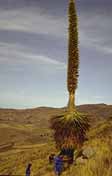 |
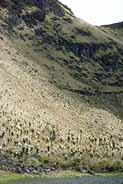 |
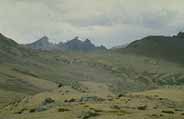 |
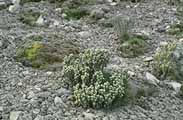 |
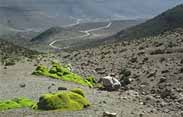 |
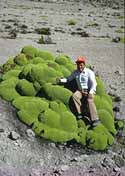 |
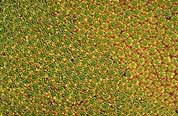 |
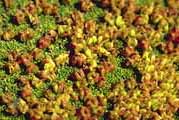 |
